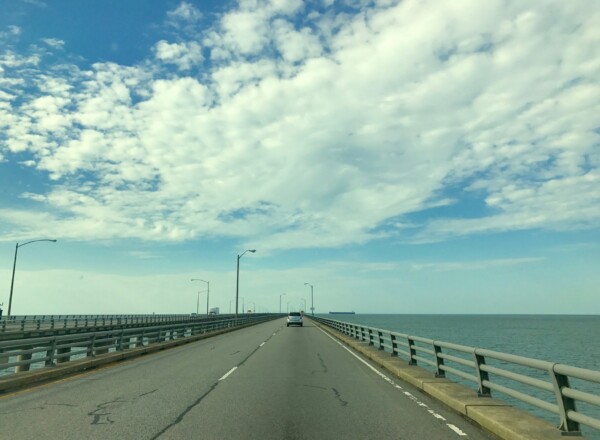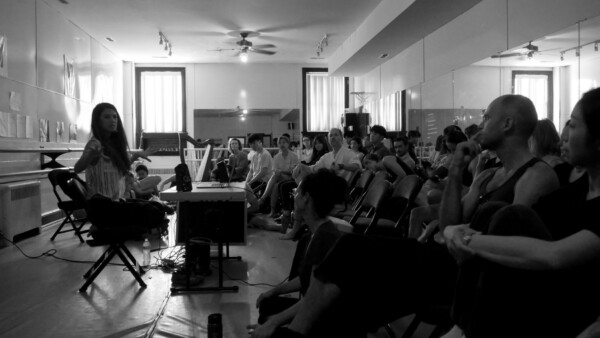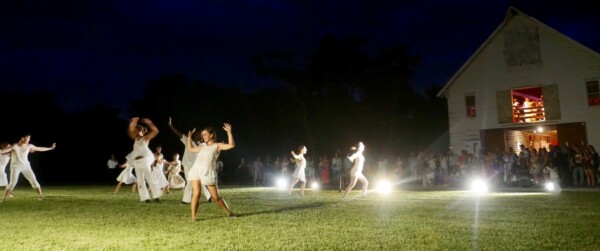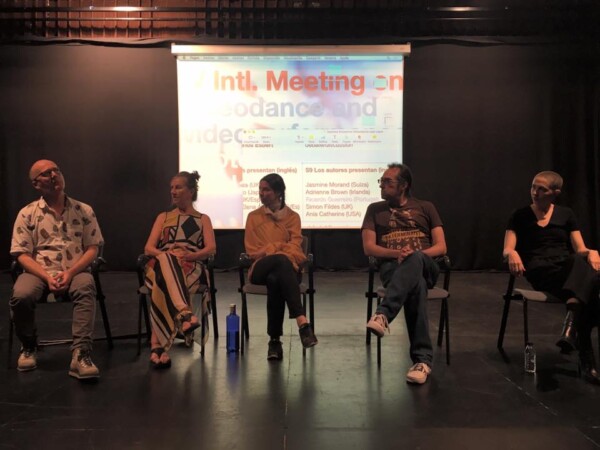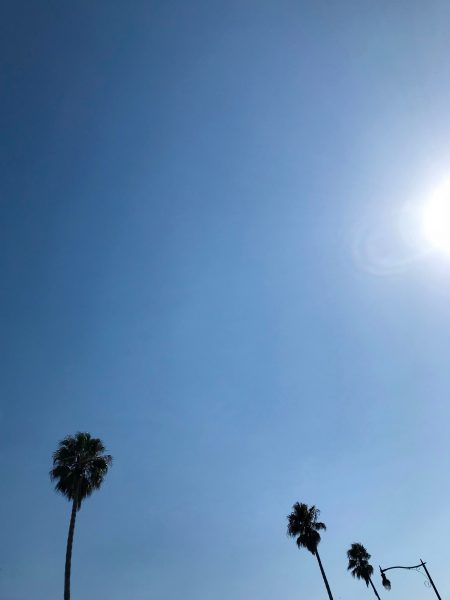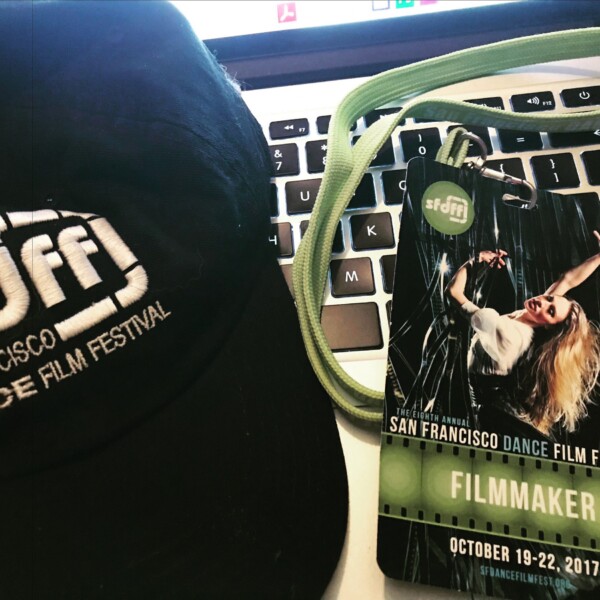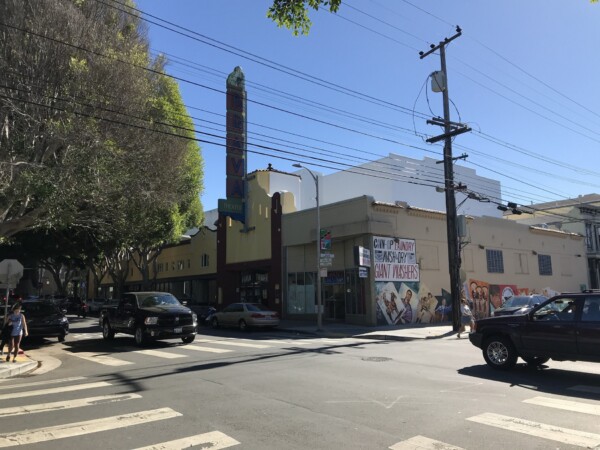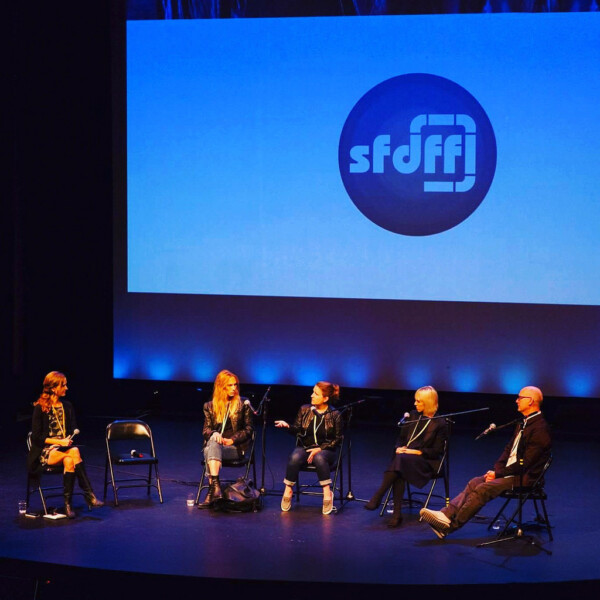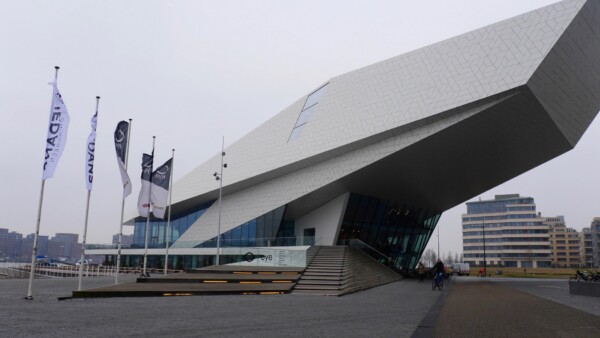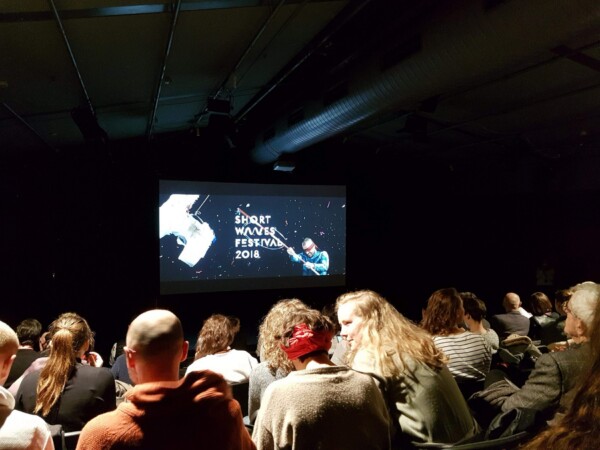In 2017 I was given grant funding to support professional development and travel by the main Scottish Arts funding organisation Creative Scotland (www.creativescotland.com).
In this article I share some of my experiences of traveling over a period of 9 months to Experimental Film Virginia, Cape Charles, USA; Valencia Videodance Studies symposium, Spain; San Francisco Dance Film Festival, California, USA; Amsterdam Cinedans, Netherlands and Shortwaves Festival, Poznan, Poland. I hope it will give some insights and perspective on my world as an itinerant screendance artist, and the range of activities taking place that support our diverse interdisciplinary practice.
July 2017 – Experimental Film Virginia, Cape Charles, USA
Experimental Film Virginia is a two-week residential film making laboratory, Launched in 2013-2014 by a National Endowment for the Arts grant, Experimental Film Virginia is a celebration and an exploration, a film-making artist residency with weekend festival events where the films are made in situ and then immediately screened. EFV is an innovative festival/residency model created to develop relationships between artists and audiences, and build cultural tourism around the arts in the small town setting of Cape Charles. Around 40 -50 artists, film makers, dancers, choreographers, technicians and production managers and mentors gather every year and are guided skilfully through this process by artist and director Renata Sheppard. I traveled to EFV as a production and editing mentor to support artists through their processes as needed, and with the aim to help them realise their production ideas.
Traveling from Norfolk airport across the huge Chesapeake Bay bridge/tunnel by Uber felt like being catapulted in to the sea. It seemed to stretch forever. I was dropped safely at the door of the Lemon tree Gallery in the small town of Cape Charles and in to an intense two weeks of creative development for the lucky artists who decided to take on the EFV challenge. After being assigned accommodation in a beautiful house several blocks from centre of town, sharing with other artists and technical staff, I was given a draft schedule, an introduction to future friends, and I settled down on a warm porch and eased my way in to the residency. Due to my disability I had put a call out for assistance so I was helped enormously by the presence of Robin Gee, Associate Professor of dance at Greensboro University who not only helped move me around in her car (and get me coffee), but added a great deal of humour, professional insight and energy to the residency.
The first week is taken up with exploration and getting to know people. The relationships between local residents, production staff, film makers and dance artists are formed. Lectures are given, social events attended, local businesses visited, locations scouted, ideas presented and discussed and revised and production schedules sketched out.
Interfacing and engaging with the local population and business community is a core component of this residency. Artists are really encouraged to use the town, the people and the environment as a location. Local businesses and individuals are approached to supply props, resources and venues. It’s a huge effort and the community on the whole engages with it wholeheartedly. Of course as an organisational task it is not without its challenges. Trying to manage competing demands from artists on the available resources of dancers, crew and equipment is an enormous undertaking but one that I saw completed with amazing patience by Renata and her team. Everyone works long hours and it’s tiring, especially in the heat of the Virginia summer.
The second week is production week and I tried to stay available, moving between artists and computers as much as I could. A few teams were pretty self sufficient and often I sat and watched and listened and gave opinions if asked. In the midst of this I was reminded again and again of the broad church that is dance film making. This makes for interesting and exciting collaborations but also some residual frustrations. Choreographers often come to this with a different language to film makers and it still seems a problematic area that dancers can appear to be subject/object of film making instead of being involved at the heart of a hybrid embodied practice. Film makers sometimes come with an inflexible set of rules that can appear at odds with an experimental approach that comes with the contemporary dance world. Still we muddle through and try to find common ground.
 In this intense creative process emotions can run high and artists always feel the pressure to create their best possible work with as much resources as they can get. Despite the distractions of social events, visits to oyster farms, beautiful vineyards, beaches and the terrific Art in a Barn event; the most amazing video work gets completed in a real short time frame. You can see some of the final videos on the Experimental Film Virginia Vimeo site: (https://vimeo.com/user56888033).
In this intense creative process emotions can run high and artists always feel the pressure to create their best possible work with as much resources as they can get. Despite the distractions of social events, visits to oyster farms, beautiful vineyards, beaches and the terrific Art in a Barn event; the most amazing video work gets completed in a real short time frame. You can see some of the final videos on the Experimental Film Virginia Vimeo site: (https://vimeo.com/user56888033).
They are not all dance films as the makers got to choose how they wanted to make work. So in the mix are spoof documentaries as well as amazing screendance.
The final screening event of all the completed films at the end of the 2 weeks was at the marina in a pop-up outside cinema where everyone is invited, and people partied late to live music. The whole approach is a benchmark model for integrating art creation and events in to a small town environment supporting tourism and economic development. I recommend going if you get the opportunity (http://www.experimentalfilmvirginia.com).
September 2017 – Videodance Studies, Valencia, Spain
After spending 2 weeks in Dusseldorf, Germany working with Tatraum Projekt, an experimental performance group to create video projections, I travelled to Valencia in Spain.
The main purpose of Videodance Studies is to hold an annual Meeting in Valencia and publish the proceedings. This international meeting targets both the theoretical study of videodance and the coming together of creators and people interested in the field.
The meeting-conference has both an open call for theory articles and a festival for people to present their works. It is pulled together by Blas Payri and Rafel Arnal who are some of the most committed academic I have come across in this field to investigate and interrogate the current state of the art of videodance.
I had submitted a proposal to this symposium to compare two films I directed “Six Solos” and “Trio for a Quartet” and was excited to be accepted to present there.
Although I’m used to talking about my work this was a new approach and a new context. I appreciated the challenge and really hope that my article will be of interest to artists and academics.
I travelled with my wife Wyn on this trip to help me get around and we booked a sweet Air BnB on the outskirts of Valencia in the small satellite community of Benimamet at the end of a bus route. The taxi driver from the airport was clearly confused why we chose this spot as it was not a normal tourist destination. Despite the distance to travel each day it was really worth it for the charm and art aesthetic of the house we stayed in. Valencia itself, is a city worth visiting not least for its food, parks and architecture. It is very accessible and I’ll always remember the warmth and friendliness of people helping us on our public transit journeys, especially the rather frail looking elderly man who offered me an arm to help me off the bus.

The videodance symposium covered several days of presentations and discussions in Spanish and English again showing the diversity of the art form and artists. Several delegates there I knew by name but had never met in person which made the symposium really valuable. Some were new to me and to hear artists unknown to me talk about their own work is always incredibly exciting I find. Contributions by Marisa Hayes and Franck Boulege from Videodanse Bourgogne were intelligent and had a clarity that I really appreciated.
There was also some lengthy and insightful discussions about videodance festivals across the world and the diversity of approaches. A publication has been produced that includes a long well researched article by Blas on this subject. The publication also includes writing by all the artists involved in the symposium and some more who couldn’t attend.
This document will be a useful resource for many years to come as a reference point for students, researchers and artists alike. I hope at some point to return to Valencia as I can’t overstate the value of the kind of discourse that takes place at this kind of event (http://videodance.blogs.upv.es).
October 2017 – San Francisco Dance Film Festival, USA
Another city, another excellent Air BnB. This one filled with art and with a wonderful host in the Mission district of San Francisco. My second visit to the excellent San Francisco Dance Film Festival, the last being in 2013.
I have shown work before at this festival several times so it feels like a comfort zone in many ways. I know there will be familiar faces and friends, an adventurous attitude, and a west coast slant on the curated programme. I like the festival model as it tries to reach out to the local dance and film communities as much as possible. There is a collaborative laboratory commission process in the run up to the festival for bay area artists and the results are premiered at the festival. This approach has the benefit of pulling in good-sized audiences for these screenings. For many this will be the first time they have seen screendance and it is a great way of developing audiences.
Much of the work I’ve seen as a result of these co-laboratory productions are of high quality and as you would expect some are more successful than others. This is the nature of producing work under pressure within short timescales. I think it is so worth the risks even if only one work stands out.
The programme is dense this with a huge local and international screening programme but this year there was also a 360 VR video work and gallery installations that added to the sense of a festival moving up its game, and opening up spaces for artists to explore, and audiences to develop around. I listened to a presentation and discussion around the creation of 360VR work fully expecting to be underwhelmed but found myself getting pretty excited by what I was hearing and seeing. There is Art being created in this field and not just technical demonstration pieces. The people creating work are navigating and exploring new tools in thoughtful and questioning ways that gives me hope for the future of this approach.
For me, this visit was because I was showing ‘Six Solos’ in one of the international shorts programmes. I often wonder how my work ends up being curated alongside other very diverse approaches to the genre but I am grateful to be in a programme amongst such talent. I talk a little about the film during the post screening Q&A §and how I approached its filming and of course my particular approach to editing.
I catch up with friends, eat great food, catch a late night show at The Chapel, and get to understand the joys of sharing cab rides via ‘Lyft”. One afternoon I manage to head out over the bay bridge to Oakland to AXIS Dance Company and meet up with the new artistic director, Marc Brew, who has been a collaborator and used to live in Scotland. I also, somehow, managed to watch a lot of films at the Brava Cinema. Some uplifting, some beautiful, and some, to be honest made me want to leave the cinema but that is the way these things go.
I had been asked to take part in a panel discussion by artistic director Greta Schoenberg, called ‘Directing the Eye’ about how skilled dance filmmakers guide the focus of the viewer. As the notes outlined, “Framing, editing, and musical choices leave endless possibilities for expressing a director’s unique perspective. Whether they are working abstractly, leaving much up to audiences to decipher, or are working with a tight narrative or set choreography, they are making decisions for their viewer all along the way. What specific techniques can be used to make an important narrative moment or physical gesture clearly resonate?” I was in the talented company of Wendy Seyb, Katherine Helen Fisher and Sarah Elgart to unpick the theme. I talked a little about my editing approaches with reference to ‘Six Solos’, and also picked up on some themes I outlined in Valencia about director strategies for gathering material. The other artists laid out their own personal perspectives and a Q&A followed. I was asked about advice to new directors of screendance that I hope was of some use. Another man asks me a question about the type of camera I used and questions the quality of the image in my film, which is always a little tiresome as it relates little to the theme at hand. I fumble the answer. I don’t shoot on 4K RED cameras I can’t afford it. An FS7 is good enough in the right hands and I was asking a lot of my camera person. I’m actually happy to work with whatever tools I can get my hands on.
I’m sure I’ll be back for this festival one day not least for the food in the taqueria across from the Brava cinema (http://www.sfdancefilmfest.org/2017-schedule/).
March 2018 – Cinedans, Amsterdam, Netherlands
Six months on, a freezing breeze greets Wyn and I as we unload ourselves out of a taxi and into another Air BnB in central Amsterdam. We are here to spend the next 5 days immersed in one of the longest running and largest dance on screen festivals in the world. I have been to this festival before several times and know its worth the journey for its terrific mix of new work, international delegates, and great location. EYE film museum is located across the water from central station and proves to be a superb venue for the 15th Cinedans. Again I am here because ‘Six Solos’ is screening.
From central station you have to take a ferry across the river to EYE. It’s free and it’s bicycles and pedestrians only. A country that not only puts everywhere else to shame with its sustainable transport approach but also its support and appreciation of the art of dance in all its forms. From the outside it feels inevitable that Cinedans would thrive in this type of environment. Like San Francisco this festival has managed to weave in a co-production commissioning scheme in advance of the festival and there are other outreach, exhibition and fringe events that keeps Cinedans at the forefront of the screendance calendar in Europe.
I attended all 7 short film screening programmes. My film was shown twice and I took part in a post screening Q&A session that ended up being a little rushed and I found myself again questioning the value of them. Ive yet to come up with an alternative way of introducing artists to audiences that would be more meaningful. Again at Cinedans we saw that the interpretation of and language of dance on screen takes on many forms though the production approaches are of increasing quality. The differences between European and American curatorial tastes and production styles, though subtle, are becoming a little more apparent to me now though I would struggle to articulate that here.
Unlike other Cinedans events I have attended The Media and Dance festival network did not formally meet this year but two sessions I attended covered a lot of the same ground. An artist and producer’s brunch was a way to connect with the international network. There was a lot of discussion about how to talk about this genre to people who don’t quite ‘get’ dance let alone screendance. There is more work to be done to articulate clearly what it is we do to a wider audience. Following on from this Gitta Wigro ran a session about curating and programming of festivals that was attended by both festival directors and artists. The subsequent discussions about audience development approaches was full of personal insights from across the spectrum of festival events.
This year Cinedans had a lab demonstration event where artists and technical experts had been working together to create works involving new and emerging technologies. Again like in San Francisco this scenario works best where the output feels like a true collaboration and not one where the dance artists are in service to the technicians. The lab was a little frustrating for me where there was steps negotiate, seating was in short supply and there were cables laying all across the floor. I was once again reminded that having a disability means you often are only thought about when you turn up.
The final event of the festival is the screening programme for the local commissions. It’s sad that the “Point Taken” co-production scheme no longer runs as it produced some fantastic screendance that will surely be stand out for a long time. Instead slightly reduced scale productions have been created and though not without ambition I feel that they aren’t at quite the same standard as works Ive seen over the past few years. The two screenings are sold out and the venue is packed out with local artists and friends and families for the final closing party. I opt for a quieter last night and we prepare for our flight home (http://cinedans.nl/en/).
March 2018 – Shortwaves Festival, Poznan, Poland
My final somewhat unexpected leg of my Screendance travels took me to Poland to attend Shortwaves Festival. I abandoned my flight back to the UK from Amsterdam and flew via Munich to Poznan on the west side of Poland, only two hours drive from Berlin. I was picked up at the airport, along with several other film-makers, by some film students from the university there and who all spoke great English and talked about the town as we drove through the suburbs to our hotel. The mix of new and old architecture, and derelict buildings still tells the story of a region that has seen huge upheavals over the past century. So it was a surprise to see at least some of the medieval centre still intact.
We arrive at an arts centre to pick up festival information and registration and I see the familiar faces of fellow screendance artists. I head to my hotel and relax.
Shortwaves is actually a large short film competition over several days with 2 “Dances with Camera” screenings. Unlike other festivals I have attended, this one offers hotel accommodation, food vouchers and a contribution to travel costs. The festival is appears supported by the city and businesses which makes the whole event feel solid, very organised and resourced. I always give warning to organisers of my limited mobility and find sympathetic assistance but often I am a test to accessibility issues. Walking with crutches long distances and negotiating stairs often are a challenge for me and the venues again here mean I have to take service lifts and climb steps. There are apologies and concern of course and I am philosophical, but if honest I find it so physically exhausting I feel like giving up.
The 90 minute screening includes my film “Six Solos” mixed in with an eclectic mix of work that makes we wonder again how programmers and curators choose films. What is taste? What is a good film or not? How is the order of screening created? It’s a mystery to me even though I have done it myself. The post screening Q&A here is actually very interesting and all the artists present get time to talk about their work. The audience questions are thought provoking and it feels a privilege to be in such intelligent company. I head to the Shortwaves club bar down town and drink a beer with film makers, some of whom would soon head on to Helsinki for Loikka. This however was my last stop on my travels though I was sorry not to be part of the little travelling circus moving on to the next town.
I fly home to Edinburgh the following day with a head full of images of dance and the voices of artists to then discover I have picked up an award for the Shortwaves Jury. Could I fly back to Poznan to pick up the award?
I sent a video.
